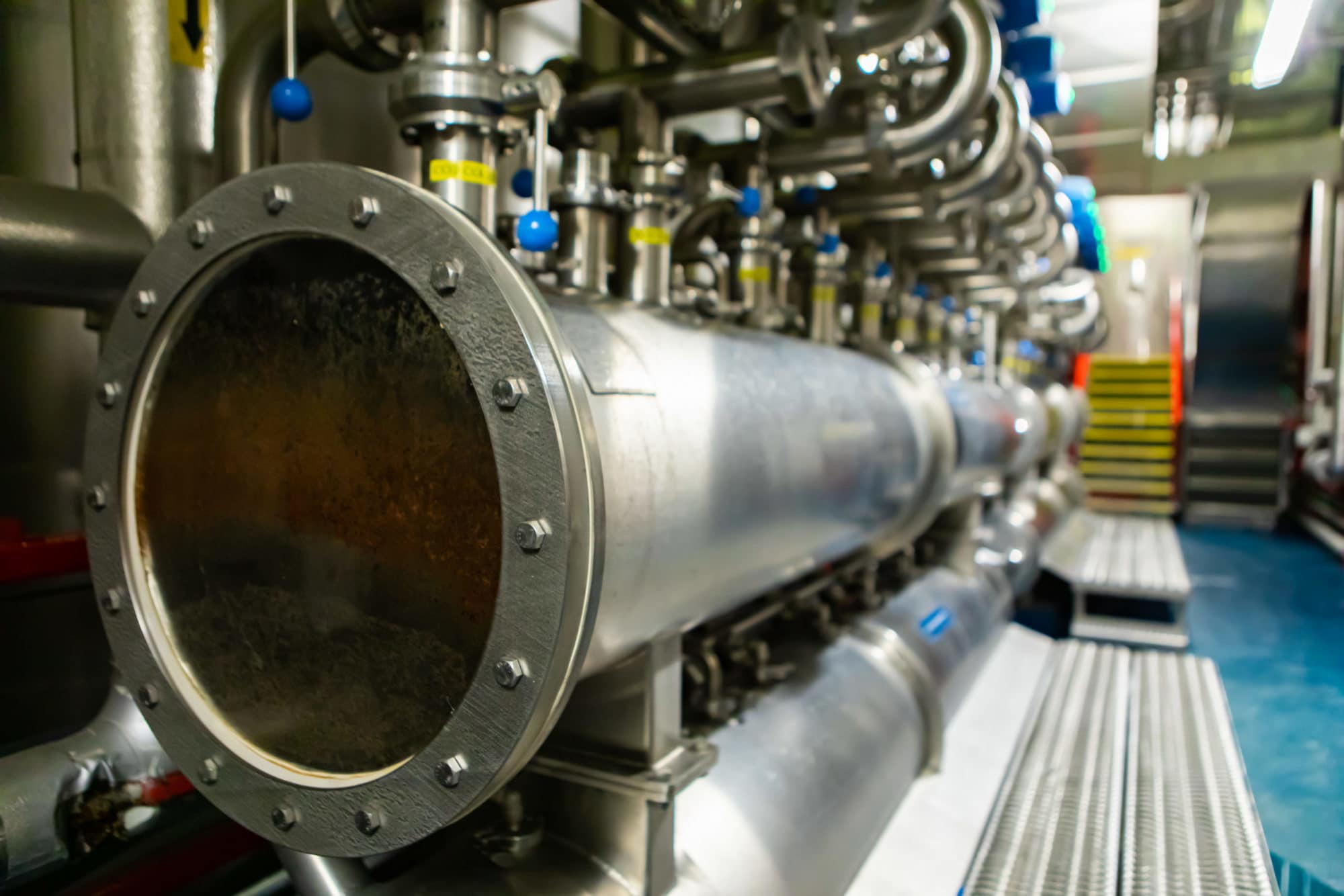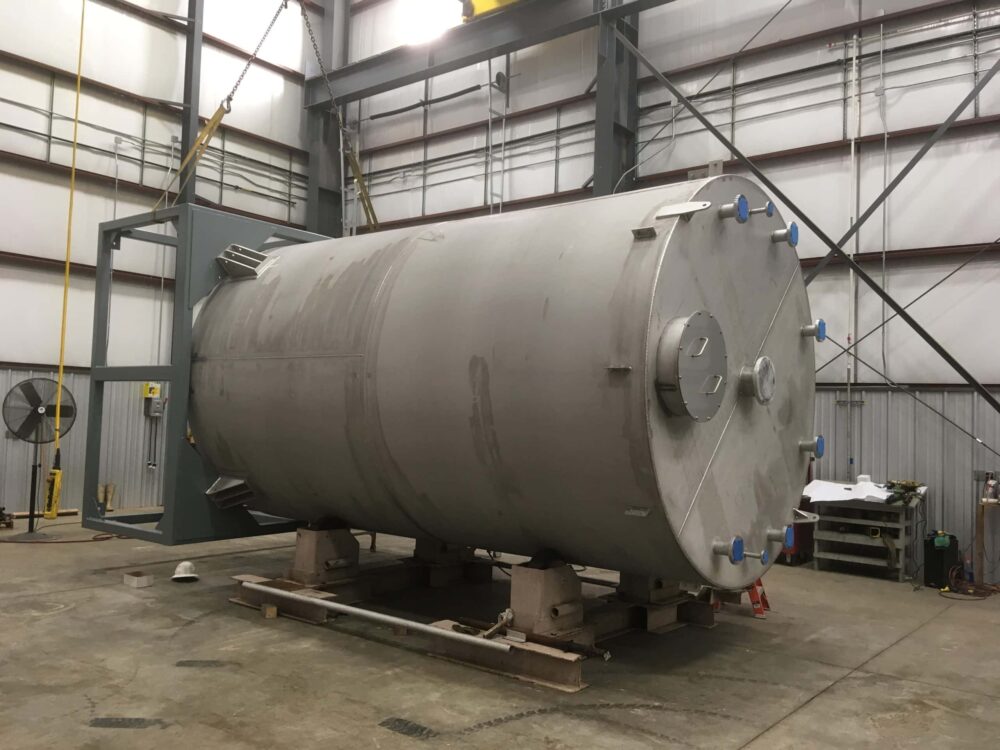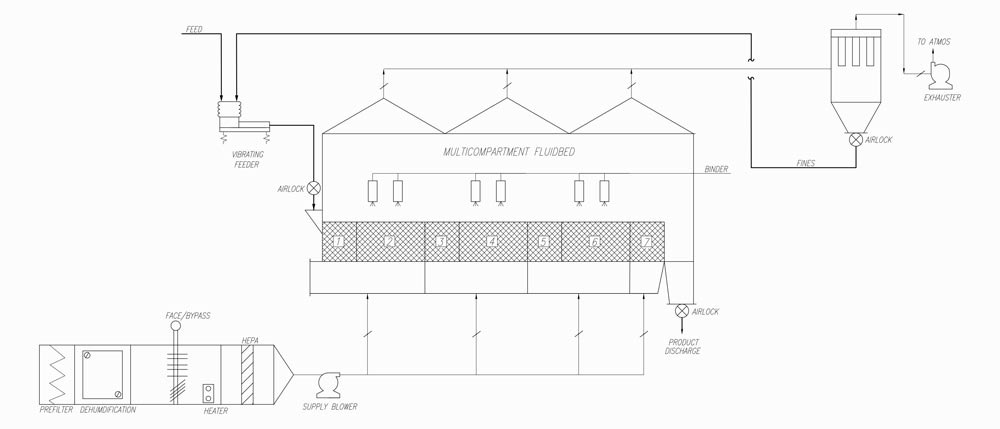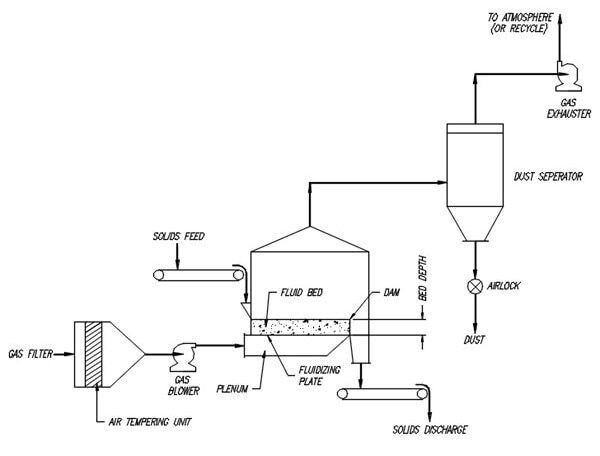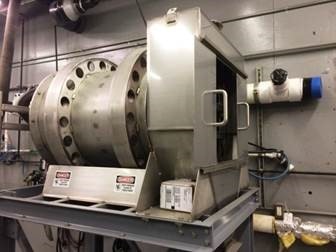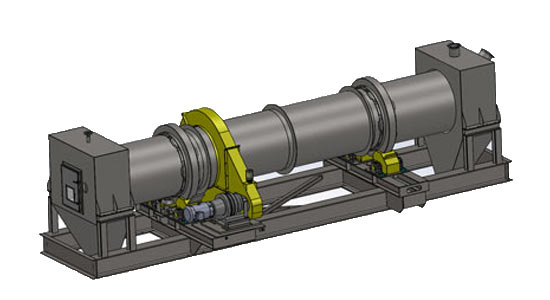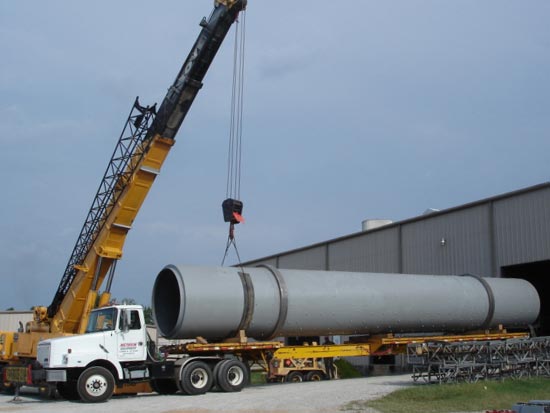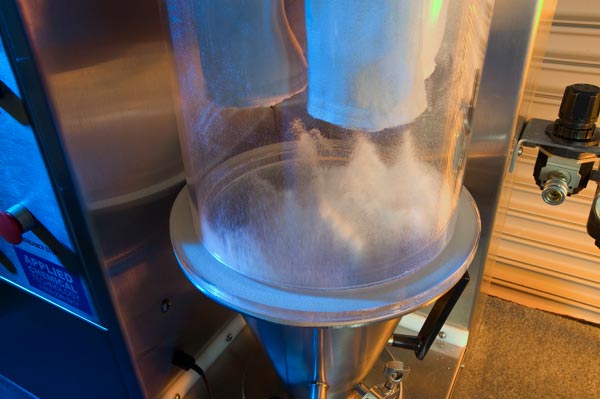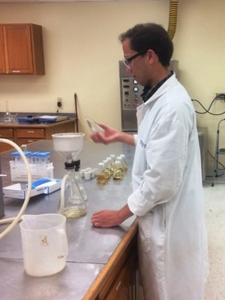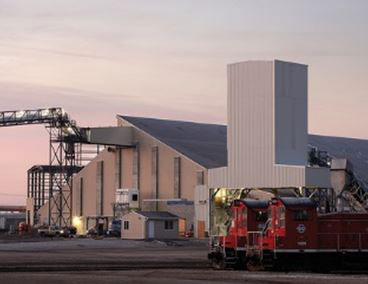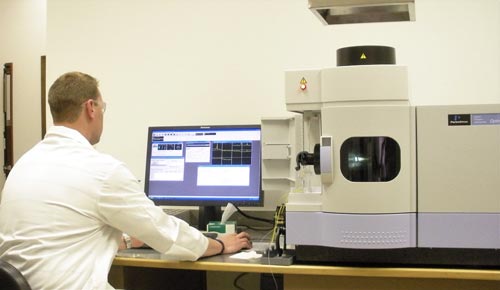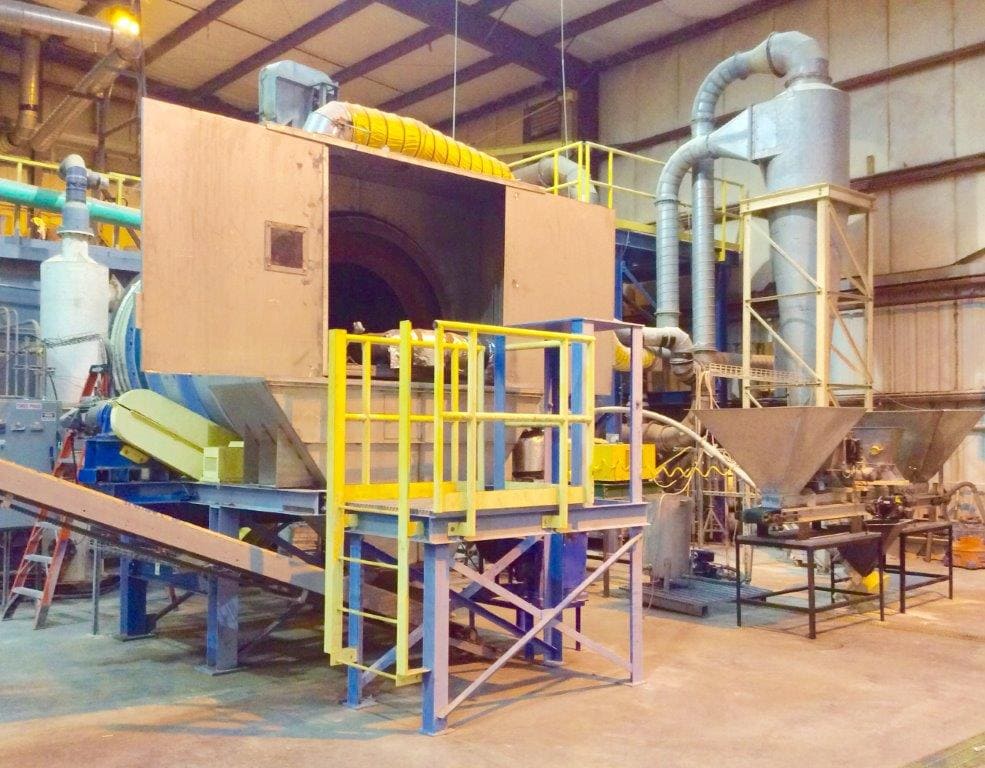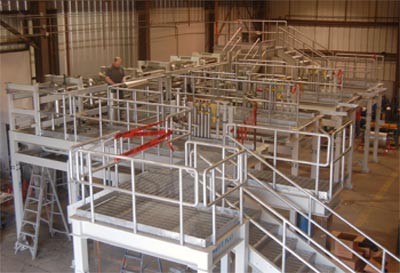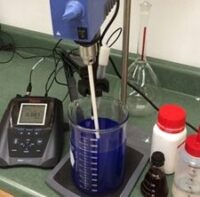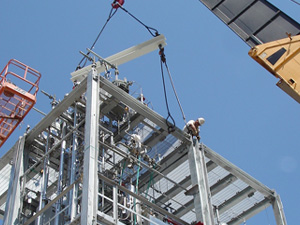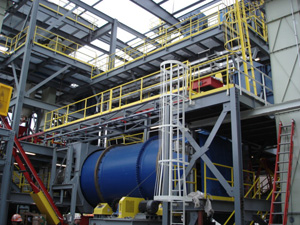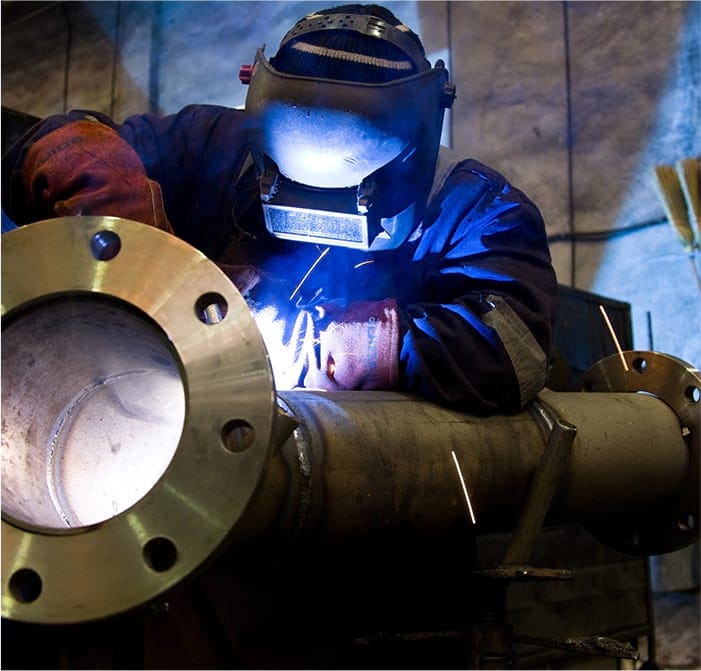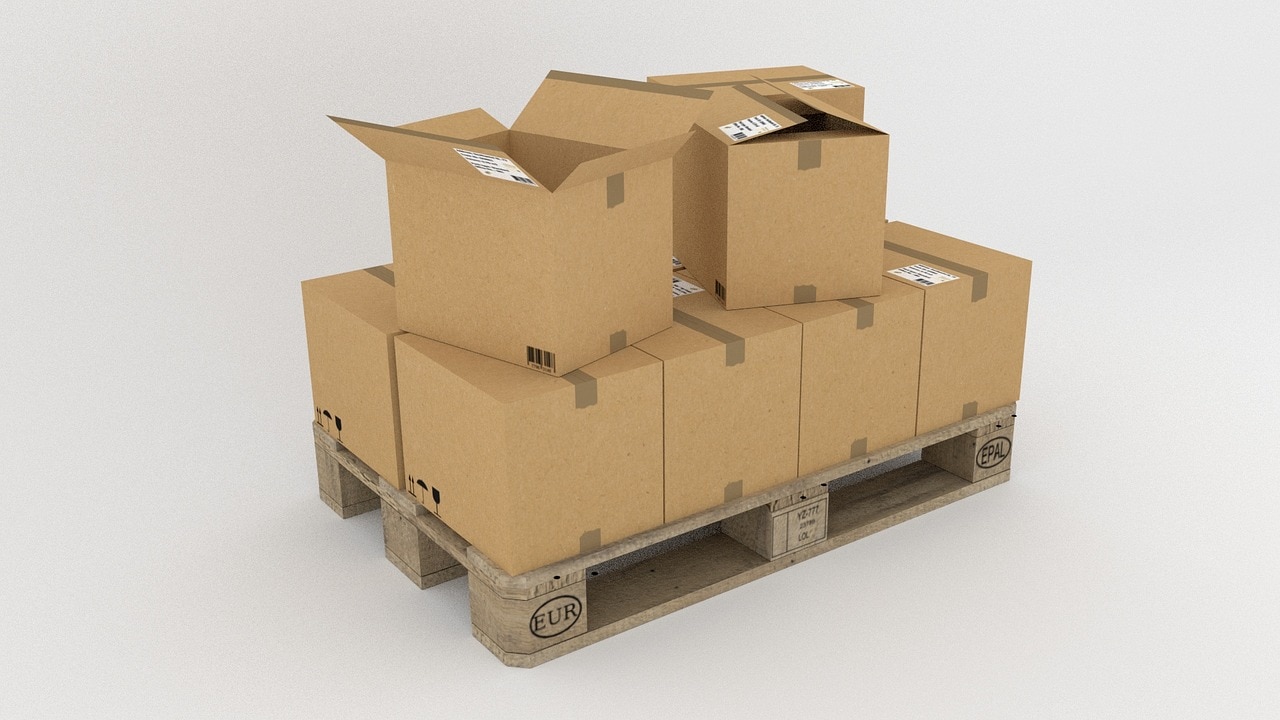
A rotary dryer, or rotary drum dryer, is a slightly inclined rotating horizontal cylinder that uses a supply of heat to continuously dry a solid material. As the drum rotates, wet solids are fed into the higher end and slowly make their way to the discharge end (lower end). The inside of the dryer includes flights designed to lift and/or mix the material inside. This helps promote heat transfer in the material.
The heat energy for drying is supplied in two basic ways. The first is by heating air or gases and blowing them directly into the drum where they come in contact with the material. This type of drum is called a direct-fired rotary dryer and the hot gas stream either flows in the same direction as the material moving through the drum (co-current flow) or opposite to the material movement (counter-current flow). The second method of heat delivery is by heating the shell of the drum and is called an indirect-fired dryer. This is done using jacket heaters (steam jacketed, etc.) or by encasing the rotating drum in a furnace. Either way, the atmosphere inside the drum is controlled, protecting the material from certain gases.
Rotary dryers are chosen by industry for their dependability and low cost. Not only are they rugged, but they are also a reliable method for producing consistent product when feedstock may vary. In addition, rotary dryers allow for zones within the drum to perform multiple processes. For example, a single rotary drum may include a zone for drying and a later zone for classifying.
Typical Materials Dried in a Rotary Dryer
- Fertilizers
- Aggregates
- Biomass – Wood Chips, Energy Crops, and Other Materials
- Minerals – Sands, Clays, and Other Minerals
- Sewage Sludge
- Animal Feeds – Cereal Grains, High Protein, Wastes, and By-Products
- Foods – Cereals, Fruits and Vegetables, Starches, and more
- Plastics – Pellets, Resin, PET, Waste
- Powders – Pigments, Chemicals, Powdered Foods, Starches





